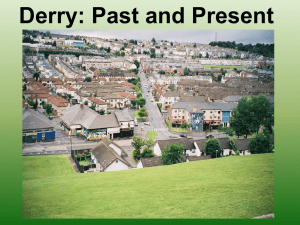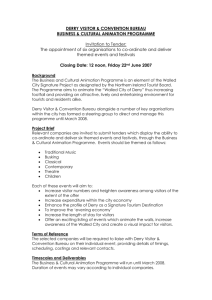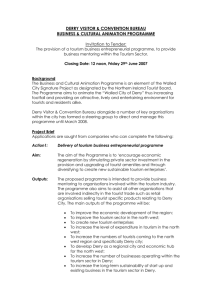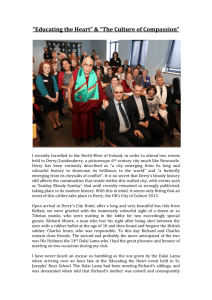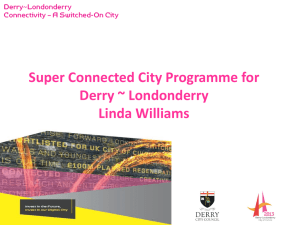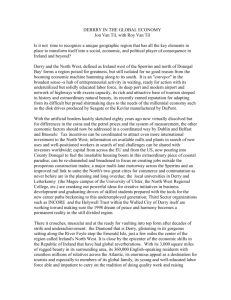Why was the choice of Coleraine as the site for Northern Ireland`s
advertisement
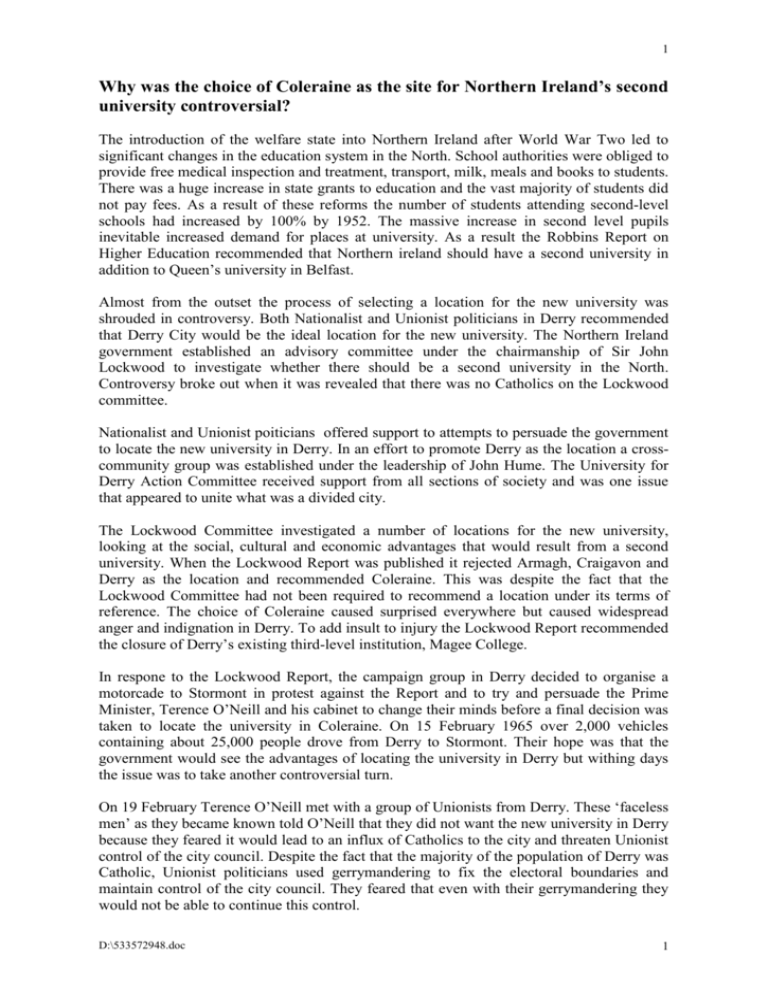
1 Why was the choice of Coleraine as the site for Northern Ireland’s second university controversial? The introduction of the welfare state into Northern Ireland after World War Two led to significant changes in the education system in the North. School authorities were obliged to provide free medical inspection and treatment, transport, milk, meals and books to students. There was a huge increase in state grants to education and the vast majority of students did not pay fees. As a result of these reforms the number of students attending second-level schools had increased by 100% by 1952. The massive increase in second level pupils inevitable increased demand for places at university. As a result the Robbins Report on Higher Education recommended that Northern ireland should have a second university in addition to Queen’s university in Belfast. Almost from the outset the process of selecting a location for the new university was shrouded in controversy. Both Nationalist and Unionist politicians in Derry recommended that Derry City would be the ideal location for the new university. The Northern Ireland government established an advisory committee under the chairmanship of Sir John Lockwood to investigate whether there should be a second university in the North. Controversy broke out when it was revealed that there was no Catholics on the Lockwood committee. Nationalist and Unionist poiticians offered support to attempts to persuade the government to locate the new university in Derry. In an effort to promote Derry as the location a crosscommunity group was established under the leadership of John Hume. The University for Derry Action Committee received support from all sections of society and was one issue that appeared to unite what was a divided city. The Lockwood Committee investigated a number of locations for the new university, looking at the social, cultural and economic advantages that would result from a second university. When the Lockwood Report was published it rejected Armagh, Craigavon and Derry as the location and recommended Coleraine. This was despite the fact that the Lockwood Committee had not been required to recommend a location under its terms of reference. The choice of Coleraine caused surprised everywhere but caused widespread anger and indignation in Derry. To add insult to injury the Lockwood Report recommended the closure of Derry’s existing third-level institution, Magee College. In respone to the Lockwood Report, the campaign group in Derry decided to organise a motorcade to Stormont in protest against the Report and to try and persuade the Prime Minister, Terence O’Neill and his cabinet to change their minds before a final decision was taken to locate the university in Coleraine. On 15 February 1965 over 2,000 vehicles containing about 25,000 people drove from Derry to Stormont. Their hope was that the government would see the advantages of locating the university in Derry but withing days the issue was to take another controversial turn. On 19 February Terence O’Neill met with a group of Unionists from Derry. These ‘faceless men’ as they became known told O’Neill that they did not want the new university in Derry because they feared it would lead to an influx of Catholics to the city and threaten Unionist control of the city council. Despite the fact that the majority of the population of Derry was Catholic, Unionist politicians used gerrymandering to fix the electoral boundaries and maintain control of the city council. They feared that even with their gerrymandering they would not be able to continue this control. D:\533572948.doc 1 2 During the debate in Stormont there was much criticism from Unionist politicans about the attitude of the Unionist Government. The controversy was not confined to the Catholic population, many unionist also supported locating the university in Derry. In an attempt to appease the opposition O’Neill agreed to keep Magee College open and then threatened to expel any unionists that voted against the government from the Unionist Party. In May a Unionist politician named Robert Nixon made an allegation that ‘nameless, faceless men from Londonderry’ had persuaded O’Neill to block the location of the university in Derry. The government denied a conspiracy and expelled Nixon from the Unionist Party. In response a petition signed by 15,000 calling for an enquiry was presented to the government. O’Neill and the govenrment simply ignored the petition. The controversy over the location of the new university in Coleraine demonstrated to the Catholic population of Derry that the Unionist government were intent on continuing to treat them as second class citizens. The fact that ‘faceless’ Unionists from Derry helped persuade the government to choose Coleraine further reinforced this view. The controversy was to contribute to the rise of the Civil Rights Movement in the late 1960s as Catholics began to demand equal rights in the North. D:\533572948.doc 2
